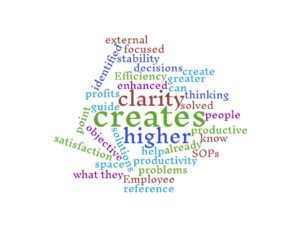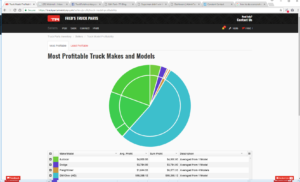
No matter what kind of business you run, there are two elements that are key to any success, and yet often times these two things are the most overlooked and undervalued. We’re talking about organization and communication, and they shouldn’t be taken lightly. You can have the best business idea in the world, but if you don’t have these two things once your business is up and running, you’re going to nosedive fast. We’re going to talk here about one way that organization and communication can work hand-in-hand to give your work a foundation.
The organization of your business needs to include a set of systems and routines that are used every day, by everyone all the way from Management to Maintenance. These systems and routines are commonly called Standard Operating Procedures (or SOPs) and they act like a backbone for the day-to-day functioning of your business. Once you have these SOPs in place, you need to communicate them to everyone involved. Let’s take a look at the Why, How and Who of SOPs:
Why
- SOPs create organization, organization creates clarity, clarity creates more space for focused, productive thinking;
- Employee satisfaction is higher because people know what they are doing and why. There is an external, objective reference point that creates stability and can help guide decisions;
- Efficiency is enhanced because less time is wasted trying to find random solutions for problems that have already been identified and solved;
- Less time wasted = greater productivity = higher profits. Sounds good to us.
How
- Study your current tasks in all departments, establish the most efficient routines for accomplishing them, and document everything;
- Implement these routines through direct communication and training;
- Ensure that all current employees are given sufficient time to absorb the information and keep up-to-date on their progress
- Create a training program for all new employees that is thorough and consistent, with everyone being exposed to the same information so that there are no gaps in knowledge.
Who
- Everyone in the company needs to participate in the actual use of the SOPs, including the Owner/President, etc. If certain people skip over the SOPs, others will start to follow their lead and you won’t have the effect you want;
- Management or Human Resources creates the SOPs with input from employees with regard to specific tasks and how best to accomplish them;
- Remaining receptive to employee suggestions after SOPs have been implemented helps to ensure compliance and respect for the procedures because they then perceive themselves and their experience as integral to the functioning of the company.
Putting together a set of SOPs might feel a bit daunting, but the time you spend now in creating this framework will be more than recuperated later in terms of different efficiencies, clarity and employee satisfaction. SOPs are a highly effective, practical tool for organization, and when they are communicated well and with consistency, they can add great value to your business in many different ways.

